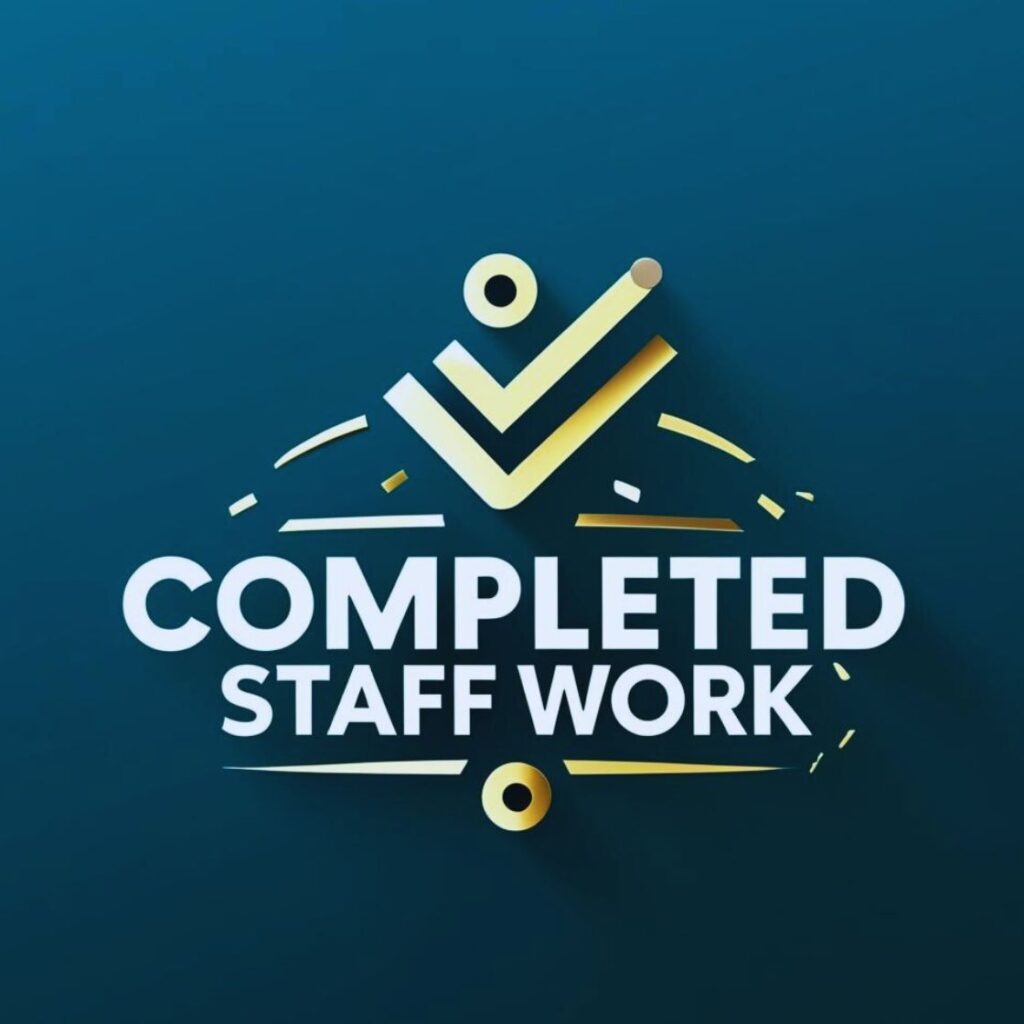POLC. Ever heard of it? It’s not the latest management trend or some buzzword cooked up in a corporate boardroom. It’s been around for decades, quietly shaping how great supervisors manage their teams. Think of it as the cheat code for getting things done—simple, practical, and powerful.
But let’s get real for a second. A lot of companies are frustrated with their supervisors. Deadlines slip. Teams are all over the place. Accountability? Barely there. And when things go wrong, everyone points fingers, but no one takes ownership. Sound familiar?
POLC can fix that. Master it, and you won’t just manage your team—you’ll lead them to results that matter. It’s not about working harder or adding more to your to-do list. It’s about doing the right things, the right way.
What is the Meaning of POLC?
POLC stands for Planning, Organizing, Leading, and Controlling. But it is something bigger than four simple words. It’s the foundation of modern management—born out of a need to simplify how leaders guide teams. It was first coined in the early 20th century by Henri Fayol, a French mining engineer who believed that managing wasn’t just an instinct but a skill that could be learned and taught. His work laid the groundwork for what we now call the POLC Framework.
Why do organizations use it to train supervisors? Because it works. POLC helps supervisors focus on what really matters—clarity, coordination, motivation, and accountability. It breaks down the messy, complicated job of supervision into manageable steps, making it easier to understand and execute.
That said, the workplace has evolved. These days, we go beyond POLC when training supervisors. We tackle new challenges—like emotional intelligence, coaching, and adaptability. But here’s the thing: understanding POLC is still non-negotiable. It’s like learning the alphabet before writing a novel. You can’t skip it, because it helps you make sense of your role as a supervisor or manager.
Mastering POLC won’t solve every problem, but it gives you a rock-solid foundation to build on. And in the ever-changing world of work, that’s a pretty great place to start.

Planning: The Foundation of Success
Planning is simply deciding what needs to be done, how to do it, and when to do it to achieve your goals.
Organizations thrive on big ambitions—hitting targets, completing projects on time, and outperforming the competition. However, even the best intentions fall flat when supervisors don’t know how to make effective plans. Projects stall, priorities clash, and teams end up spinning their wheels instead of moving forward.
So why do supervisors struggle with planning? Let’s break it down:
- Vague goals. They don’t have a clear picture of what success looks like.
- Poor prioritization. Everything feels urgent, so nothing gets done well.
- Lack of foresight. They don’t plan for obstacles, leading to last-minute chaos.
- Overwhelmed by complexity. Without a system, planning feels like an impossible puzzle.
But when supervisors master planning, everything changes. Deadlines are met. Teams work with purpose. Problems get solved before they spiral out of control. Planning turns the impossible into achievable.
Master Planning with These Six Powerful Steps
Planning isn’t just step one in the POLC framework—it’s the engine that powers everything else. Without it, even the best resources, leadership, and control measures won’t deliver the results you want. Planning is the foundation of high-performance supervision.
But let’s be honest: planning can feel like a daunting task. What if you miss something important? What if your plan falls apart halfway through? That’s where this six-step process comes in. It’s simple, practical, and proven to work.
Step 1: Set Clear Goals (X to Y by When)
Every successful plan starts with clarity. In this step, you’ll learn how to define what you want to achieve using the X to Y by When formula. This approach eliminates vagueness and provides a sharp focus for your team. With a clear goal, everyone knows what the finish line looks like and can work toward it with confidence.
By mastering this step, you’ll be able to set measurable, motivating goals that your team can actually achieve. It’s not just about defining success—it’s about making it tangible and inspiring.
Step 2: Identify Resources
A great goal is only achievable if you have the right resources. In this step, you’ll learn how to assess what you have, identify gaps, and make a plan to fill them. Whether it’s people, tools, time, or budget, understanding your resources ensures you’re prepared for the road ahead.
This step gives you a clear view of your team’s strengths and limitations. By addressing resource gaps early, you’ll avoid unnecessary stress and set a solid foundation for execution.
Step 3: Analyze Challenges Before They Happen
Every project comes with potential roadblocks, but surprises don’t have to derail your progress. In this step, you’ll learn how to anticipate challenges and develop contingency plans. By thinking ahead, you’ll be ready to adapt quickly when problems arise.
This step transforms reactive problem-solving into proactive leadership. You’ll build confidence in your ability to navigate uncertainty and keep your team on track, no matter what comes your way.
Step 4: Create a Step-by-Step Action Plan
Big goals can feel overwhelming until you break them down into smaller, manageable tasks. This step teaches you how to create a roadmap that’s easy to follow. By assigning clear responsibilities and defining actionable steps, you’ll eliminate confusion and keep your team aligned.
An effective action plan is more than a list of tasks—it’s a tool for driving accountability and focus. With this step, you’ll turn your vision into a structured plan that’s ready for execution.
Step 5: Set Timelines and Deadlines That Stick
Timelines give your plan structure and momentum. In this step, you’ll learn how to create realistic but challenging deadlines that keep your team productive without overwhelming them. By setting clear timelines, you’ll ensure that tasks move forward smoothly and projects stay on track.
This step helps you balance urgency with feasibility. You’ll create a rhythm that keeps your team motivated and ensures steady progress toward your goals.
Step 6: Communicate the Plan and Build Buy-In
Even the best plan won’t work if your team doesn’t understand it—or doesn’t believe in it. In this final step, you’ll learn how to present your plan clearly, address questions, and get your team fully invested. Communication isn’t just about sharing information; it’s about creating alignment and excitement.
When you master this step, your plan becomes more than a document—it becomes a shared mission. Your team will feel empowered, engaged, and ready to deliver.
This isn’t just a list of tasks—it’s a system for turning planning into results. Each step builds on the last, creating a process that’s both comprehensive and practical. It’s not about adding complexity to your work—it’s about creating clarity, focus, and confidence.
The Skills Supervisors Need for Effective Planning
Great planning doesn’t happen by accident. It takes key skills, like:
- Goal Setting. Breaking down big ambitions into clear, actionable objectives.
- Prioritization. Knowing what matters most—and focusing on it.
- Time Management. Allocating time wisely and creating realistic timelines.
- Problem-Solving. Anticipating roadblocks and finding ways around them.
- Strategic Thinking. Connecting daily tasks to the bigger picture.
How Supervisors Can Develop Planning Skills
The good news? These skills can be learned and sharpened. Here’s how:
- Practice SMART Goal-Setting. Specific, Measurable, Achievable, Relevant, Time-bound goals create clarity.
- Use Planning Tools. Calendars, task managers, and Gantt charts keep you organized.
- Seek Feedback. Ask your team and peers for input on your plans.
- Reflect and Improve. After every project, evaluate what worked and what didn’t.
- Take Small Steps. Start planning smaller tasks before tackling big projects.
Planning isn’t just a task—it’s a skill that sets supervisors apart. Master it, and you’ll unlock your team’s full potential while positioning yourself as a leader who delivers results.
These programs align with setting goals, creating strategies, and laying the groundwork for action:

Organizing: Turning Plans into Action
Organizing is structuring resources—people, tools, and processes—to execute your plans effectively.
A plan is only as good as the execution. Organizations often aim high, but without proper organization, even the best strategies crumble. Teams get bogged down in confusion, work overlaps, and key details slip through the cracks. Supervisors who don’t know how to organize leave their teams spinning in chaos.
Why do supervisors struggle with organizing?
- Unclear roles. Team members don’t know who’s responsible for what.
- Poor resource allocation. Time, tools, or talent aren’t distributed where they’re needed most.
- Lack of systems. Without processes, work feels scattered and unpredictable.
- Overreliance on themselves. Supervisors take on too much instead of empowering their team.
But when supervisors excel at organizing, their teams thrive. Workflows become seamless. Everyone knows their role and contributes effectively. Teams hit their goals on time, and supervisors feel in control instead of overwhelmed.
Master Organizing in 5 Simple Steps
Organizing is where plans come to life. It’s the process of turning ideas into action, chaos into clarity, and potential into performance. Without organizing, even the best plans fall apart. Tasks overlap, responsibilities blur, and progress stalls.
The good news? Organizing doesn’t have to be complicated. It’s about putting the right pieces in the right places so your team can function like a well-oiled machine. This five-step process makes it simple, actionable, and impossible to mess up.
Step 1: Define Roles and Responsibilities
One of the biggest reasons teams fail to deliver is a lack of clarity about who’s responsible for what. In this step, you’ll learn how to define roles clearly and ensure every team member knows their part in the bigger picture.
This isn’t just about handing out tasks—it’s about empowering people to own their work. When roles are defined well, teams operate with confidence and accountability.
Step 2: Allocate Resources Effectively
Organizing is about more than just people. It’s about making the best use of time, tools, and budgets. In this step, you’ll learn how to distribute resources where they’re needed most—without stretching your team too thin.
You’ll move from “make do with what we have” to “maximize what we’ve got.” By the end of this step, you’ll know how to balance workloads and ensure nothing falls through the cracks.
Step 3: Develop Systems and Processes
Chaos creeps in when there’s no structure. In this step, you’ll learn how to create repeatable systems and workflows that streamline operations and reduce confusion. Whether it’s a checklist for daily tasks or a process for approvals, systems make your team’s work predictable and efficient.
This isn’t about adding bureaucracy—it’s about giving your team a framework that frees them to focus on what matters most.
Step 4: Establish Clear Communication Channels
Great teams aren’t just well-organized—they’re well-connected. In this step, you’ll learn how to set up communication systems that ensure everyone stays in the loop. From project updates to feedback loops, clear communication keeps your team aligned and focused.
When everyone knows where to get information and how to share updates, collaboration becomes second nature. You’ll eliminate misunderstandings and keep your team moving forward together.
Step 5: Create a Team Calendar That Works
Time is your most valuable resource. In this step, you’ll learn how to create a team calendar that balances deadlines, meetings, and tasks without overwhelming anyone. A well-structured calendar ensures that your team works efficiently while still having room to breathe.
This step isn’t just about scheduling—it’s about creating rhythm and predictability for your team, so they can focus on doing their best work.
The Skills Supervisors Need for Effective Organizing
Good organization relies on specific skills, including:
- Delegation. Assigning tasks to the right people based on their strengths.
- Resource Management. Making the most of available time, tools, and talent.
- Process Design. Creating repeatable systems to reduce confusion and errors.
- Prioritization. Knowing what to focus on and when to adjust resources.
- Collaboration. Ensuring team members work together efficiently.
How Supervisors Can Develop Organizing Skills
Organizing is a craft you can master with practice. Here’s how:
- Clarify Roles. Use an accountability matrix to define who does what.
- Create Processes. Document workflows to eliminate guesswork and inconsistency.
- Learn to Delegate. Start small by assigning tasks you don’t need to handle personally.
- Leverage Tools. Use project management platforms like Trello or Asana to track progress.
- Regularly Review and Refine. Look for bottlenecks and make adjustments to improve efficiency.
Organizing bridges the gap between vision and execution. Get it right, and you’ll unlock your team’s potential, reduce stress, and deliver results that make an impact.
These programs focus on structuring resources, tasks, and responsibilities effectively:

Leading: Inspiring Action and Building Momentum
Leading is about motivating, guiding, and influencing your team to achieve shared goals.
Organizations don’t just want supervisors who manage tasks—they want leaders who inspire results. But here’s the hard truth: many supervisors fall short in leadership. Instead of uniting their teams, they unintentionally create disengagement, confusion, or even resentment. Teams may hit targets, but they lack energy, trust, and purpose.
Why do supervisors struggle with leading?
- Unclear vision. They don’t paint a compelling picture of success.
- Ineffective communication. Messages are vague or inconsistent, leaving teams unsure of direction.
- Micromanagement. Supervisors stifle creativity and ownership by not trusting their teams.
- Avoidance of conflict. They let issues fester instead of addressing them head-on.
- Lack of emotional intelligence. They fail to connect with their team on a human level.
When supervisors master leadership, everything changes. Teams become more engaged, proactive, and aligned. They don’t just complete tasks—they commit to the mission. Supervisors who lead well turn workplace challenges into opportunities for growth and success.
Master Leading with These Five Easy Steps
Leading isn’t about barking orders or having all the answers. It’s about inspiring action, building trust, and empowering your team to do their best work. Leadership is the heart of the POLC framework because without it, plans and organization lose momentum, and your team stalls.
But here’s the thing: great leadership isn’t about being born with charisma. It’s about mastering a few key behaviors that bring out the best in you and your team. These five steps will help you lead with confidence, clarity, and purpose.
Step 1: Establish a Clear Vision
Leadership starts with direction. In this step, you’ll learn how to articulate a clear vision that motivates your team and aligns their efforts with your goals. This isn’t just about setting a destination—it’s about showing your team why their work matters and how it contributes to the bigger picture.
When you establish a compelling vision, your team doesn’t just follow—they buy in. They see the value in their work and are inspired to go above and beyond.
Step 2: Motivate Your Team
Motivation isn’t about empty pep talks. It’s about understanding what drives your team and creating an environment where they feel valued and supported. In this step, you’ll learn how to recognize individual strengths, provide meaningful feedback, and celebrate wins—big and small.
By mastering motivation, you’ll create a culture where your team shows up engaged, energized, and ready to deliver.
Step 3: Foster Trust and Collaboration
Trust is the currency of leadership. Without it, teams crumble under pressure. In this step, you’ll learn how to build trust by being authentic, consistent, and approachable. You’ll also discover how to foster collaboration, ensuring your team works together seamlessly—even in high-stakes situations.
When trust and collaboration are strong, your team doesn’t just work harder—they work smarter. They support each other and rise to challenges together.
Step 4: Communicate Effectively
Great leaders know how to communicate. In this step, you’ll learn how to deliver clear, consistent messages that inspire action. Whether it’s setting expectations, giving feedback, or resolving conflicts, your ability to communicate effectively will determine your team’s success.
When you master communication, you eliminate confusion, reduce friction, and create a shared sense of purpose.
Step 5: Address Conflicts Constructively
Conflict is inevitable in any team, but great leaders don’t avoid it—they address it head-on. In this step, you’ll learn how to approach conflicts as opportunities for growth and improvement. By fostering open dialogue and finding win-win solutions, you’ll turn tension into trust.
By leading through conflict with confidence, you’ll strengthen relationships and keep your team focused on what matters most.
Leadership isn’t about being perfect—it’s about being intentional. Each step in this process helps you build the habits and behaviors that create lasting impact. It’s not about trying to control every outcome—it’s about empowering your team to perform at their best.
The Skills Supervisors Need for Effective Leadership
Great leaders rely on a blend of hard and soft skills, such as:
- Vision Setting. Clearly defining the “why” behind the work.
- Motivation. Inspiring teams to perform at their best.
- Empathy. Understanding and addressing individual needs and concerns.
- Conflict Resolution. Turning disagreements into productive discussions.
- Communication. Delivering clear, consistent, and persuasive messages.
How Supervisors Can Develop Leadership Skills
Becoming a strong leader is a journey, but every step pays off. Here’s how to start:
- Define Your Vision. Articulate the bigger picture and why it matters.
- Practice Active Listening. Show your team that their input matters.
- Delegate with Trust. Empower your team to take ownership of tasks.
- Embrace Feedback. Seek honest input from peers and your team to refine your leadership style.
- Model the Behavior You Want to See. Set the standard with your actions, not just your words.
Leadership isn’t about titles—it’s about impact. Master the art of leading, and you’ll create a team that not only achieves results but thrives together.
Cultivating Malasakit: Transforming Workplace with Empathy and Care
These programs are about inspiring, guiding, and empowering teams:

Controlling: Keeping the Team on Track
Controlling is about monitoring progress, measuring results, and making adjustments to ensure goals are met.
Even the best plans and organized workflows can go off course. Organizations rely on supervisors to keep things moving smoothly, but many struggle to track progress effectively. Deadlines slip, quality standards are missed, and no one notices until it’s too late.
Why do supervisors struggle with controlling?
- Lack of clear benchmarks. Without specific metrics, it’s impossible to measure success.
- Inconsistent follow-ups. Supervisors either check in too often (micromanaging) or not enough (losing touch).
- Poor feedback systems. Problems go unnoticed because teams aren’t encouraged to report issues.
- Failure to adjust. Supervisors stick to the original plan even when it’s clearly not working.
But when supervisors excel at controlling, they create a safety net for success. Problems are caught early. Teams stay focused, and progress is steady. Controlling isn’t about watching over people’s shoulders—it’s about ensuring the team’s efforts lead to the desired outcomes.
Master Controlling with These Five Essential Steps
Controlling isn’t about being a micromanager. It’s about keeping your team on track, ensuring quality, and making adjustments when things go off course. It’s the final piece of the POLC framework, tying everything together to ensure your goals are met.
Think of controlling as your dashboard—it gives you real-time data on how your team is performing so you can make informed decisions. With the right approach, controlling doesn’t stifle creativity or independence; it empowers your team to deliver their best work consistently.
These five steps will help you master the art of controlling without crossing the line into micromanaging.
Step 1: Set Clear Performance Metrics
If you don’t measure it, you can’t manage it. In this step, you’ll learn how to define key performance indicators (KPIs) that align with your goals. These metrics act as guideposts, letting you know whether your team is on track or needs course correction.
By setting the right metrics, you’ll focus on what really matters—outcomes, not just effort. This clarity ensures your team knows what success looks like and how to achieve it.
Step 2: Monitor Progress Regularly
Checking in doesn’t mean breathing down your team’s neck. In this step, you’ll learn how to monitor progress effectively, using tools and systems that provide insights without creating unnecessary stress. Regular monitoring helps you spot potential issues early, before they snowball into bigger problems.
By keeping a steady eye on progress, you’ll stay informed and make adjustments proactively, not reactively.
Step 3: Provide Constructive Feedback
Feedback is a powerful tool, but only if it’s done right. In this step, you’ll learn how to deliver feedback that’s clear, actionable, and supportive. Whether it’s correcting mistakes or recognizing achievements, your feedback will guide your team toward continuous improvement.
When feedback is part of your controlling process, it becomes a tool for growth—not a source of frustration.
Step 4: Adjust Plans When Needed
No plan is perfect. In this step, you’ll learn how to identify when adjustments are necessary and how to make them without derailing your team’s momentum. Whether it’s reallocating resources or revising timelines, you’ll stay flexible and focused on the end goal.
This step ensures you’re not stuck in “set it and forget it” mode. Instead, you’ll adapt dynamically to challenges and opportunities.
Step 5: Evaluate Outcomes and Learn
The final step in controlling is reflection. In this step, you’ll learn how to evaluate your team’s performance and the effectiveness of your plan. This isn’t just about identifying what went wrong—it’s about celebrating wins, learning from mistakes, and finding ways to improve.
By building evaluation into your process, you’ll create a culture of accountability and continuous growth.
Controlling isn’t about micromanaging—it’s about creating a system of checks and balances that supports your team’s success. Each step in this process helps you stay informed, guide your team effectively, and ensure consistent progress.
The Skills Supervisors Need for Effective Controlling
Controlling requires a balance of analytical and interpersonal skills, such as:
- Monitoring. Tracking key performance indicators (KPIs) and milestones.
- Problem-Solving. Identifying and resolving issues quickly.
- Decision-Making. Knowing when to adjust course and when to stay the path.
- Feedback Delivery. Offering constructive input to improve performance.
- Accountability. Holding the team (and yourself) responsible for results.
How Supervisors Can Develop Controlling Skills
Controlling is a skill that grows with practice and reflection. Here’s how supervisors can get better at it:
- Set Clear Metrics. Define specific, measurable goals for each project.
- Schedule Regular Check-Ins. Consistent updates help identify issues before they escalate.
- Use Data Wisely. Focus on metrics that truly matter, not just what’s easy to measure.
- Provide Feedback Effectively. Make it timely, specific, and actionable.
- Embrace Flexibility. Be prepared to revise plans when new challenges arise.
Controlling isn’t about perfection—it’s about progress. Master this function, and you’ll ensure your team stays on track, delivers results, and continually improves along the way.
These programs focus on monitoring performance, providing feedback, and ensuring goals are met:

Applying POLC in Your Workplace
Now that you have a handle on the POLC Framework, let’s talk about how to put it into action. The framework is a practical tool you can use every day to manage your team effectively.
For instance, if you’re leading a project to implement a new customer relationship management (CRM) system, here’s how you can apply the POLC Framework:
- Planning: Start by setting clear goals for the CRM implementation. What do you want to achieve? How will the CRM system improve customer interactions? Set a timeline and identify key milestones.
- Organizing: Assign roles and responsibilities. Who will oversee the software installation? Who will train the staff? Ensure everyone knows their role and has the resources they need.
- Leading: As the project progresses, keep your team motivated and focused. Address any concerns, provide support, and ensure that communication flows smoothly.
- Controlling: Monitor the project’s progress closely. Are you hitting your milestones? Is the CRM system working as expected? If something goes off track, make the necessary adjustments to keep the project moving forward.
By applying the POLC Framework in this way, you’ll have a clear roadmap for success. The POLC Framework makes it easier to manage your team and achieve your goals.

The POLC Framework: Your Key to Successful Management
The POLC Framework is your key to successful management. By using it, you’re setting yourself up to be a more effective supervisor. Each part of the framework works together to create a strong foundation that helps you manage your team, meet your goals, and navigate challenges with confidence.
Think of the POLC Framework as a toolbox. Each tool has its purpose, and when used together, they make your job easier and more effective.
Take the First Step
Now that you understand the POLC Framework, it’s time to put it into practice. Pick an upcoming project—big or small—and consciously apply the POLC Framework. Start by planning your goals and organizing your resources.



